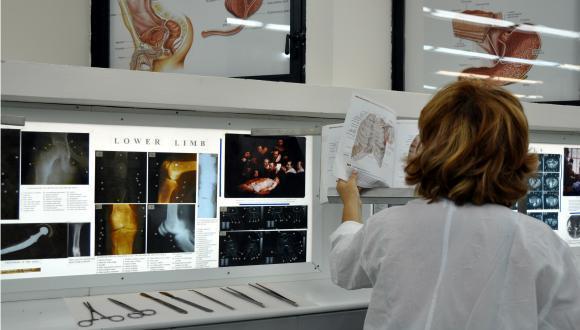Anatomy and Anthropology
The goal of the Department of Anatomy and Anthropology is to promote biological and anthropological research based on the anatomy of the human body, using the most advanced technological tools and methodologies.
The Department conducts extensive research in the following fields
Biological Anthropology
This field investigates the physical and behavioral aspects of human beings, as reflected in their bones. It includes several research areas: human evolution, modern human populations origin and dispersal, biohistory research-ancient populations, history reconstruction based on the study of human remains, paleopathology (evolutionary history of illnesses in ancient populations), forensic anthropology, genetic research of ancient populations based on DNA extraction from ancient human remains, as well as sediment DNA, and evolutionary medicine, i.e. interactions between environment and diseases over long periods of time.
Neuroanatomy
This field of research focuses on the interrelationship between brain structure, function, and human behavior. Among other topics, neuroanatomy research includes: interpersonal differences in brain structure and function, brain connectivity in healthy compared to mentally ill people, brain mechanisms of learning, neuroplasticity, and rehabilitation following head injuries. The research is based on mouse models and human studies using MRI.
Bone Biology
Researchers in the Department investigate genetic, hormonal, and therapeutic mechanisms, impacting skeletal health. This research is based on genetic methods, molecular biology tools, imaging and 3D morphometry, biomechanics, and epidemiology. Areas of interest include endocrine and endocannabinoid system influence, crosstalk between the immune system and bone homeostasis (osteoimmunology), fracture healing, and pathologies such as osteoporosis and degenerative joint disease (arthritis).
Teaching in our Department
The Department of Anatomy and Anthropology coordinates and teaches courses in anatomy and neuroanatomy for medical students of the School of Medicine 4-year and 6-year programs, School of Dental Medicine, New York/American program, and joint BSc program in Medical and Life Sciences. The Department also teaches courses for MSc and PhD students at the School of Graduate Studies of the Faculty of Medicine.
Anatomy teaching methods entail frontal lectures, guided self-learning, dissection labs, and imaging labs (CT, MRI and ultrasound). Teaching staff includes the faculty’s professors and instructors, students and guests from the radiology and surgery departments of the TAU-affiliated hospitals.


